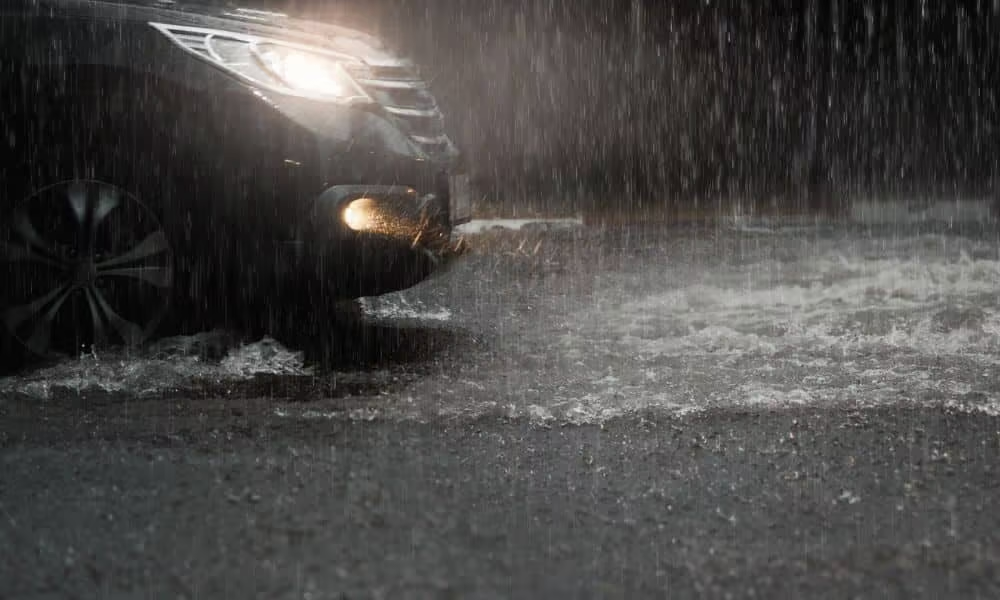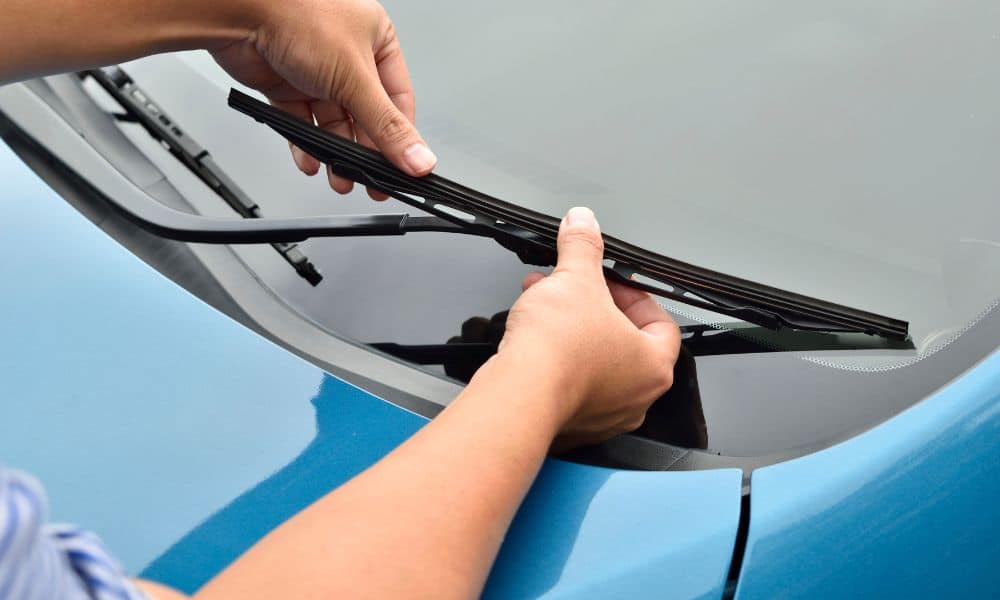With forecasters predicting higher than average rainfall this summer, Australian motorists are more likely than normal to encounter wet weather on our roads.
Wet weather significantly increases the risk of a road accident, with one study finding a 34% increase in the risk of a fatal accident when it is raining.
Factors which make driving in storms and rain dangerous include:
- Reduced grip from slippery roads
- Longer stopping distances
- Risk of aquaplaning (when a layer of water separates your tyres from the road, causing the vehicle to ‘skate’ along the road)
- Significantly reduced visibility
- Hazards such as fallen trees, rocks or power lines
- Standing water on the side of the road
- Flood waters
Now is the time to get yourself and your car ready to face whatever mother nature throws at our roads this summer.
Here are 13 tips to help you prepare for driving in storm season.
1: Lower your speed
Speeding is the single biggest contributor to fatal road accidents. The National Highway Traffic Safety Administration (NHTSA) has found that speed is involved in one-third of motor vehicle fatalities.
Driving at a safe speed is especially important when it’s wet. Remember, the speed limit is the maximum speed that you can drive during ideal driving conditions—it isn’t a target. When it’s raining, drive 5-10km/h below the speed limit (or slower if the conditions require it).
2: Leave a gap
At 100km/h, you need 90 metres to come to a complete stop - in the wet, you need 122 metres. To account for this, when it’s wet allow twice as much time as usual between yourself and the vehicle in front. If you’re in a car, that means at least four seconds instead of two. That doubles again (from four to eight) if you’re behind the wheel of a heavy vehicle.
An easy way to check is to pick an object on the side of the road (such as a tree), and watch for the back of the car in front to pass it. Count out loud ‘one-thousand-one, one-thousand-two, one-thousand-three, one-thousand-four’. This takes four seconds. If your car passes the object before you finish counting, you are too close.
3: Drive carefully
As well as slowing down and leaving a gap, avoid heavy braking or sharp turning, and try to drive in the tracks of the vehicle in front. This will help avoid aquaplaning or skidding.
If your car does begin to aquaplane, take your foot off the accelerator, keep your steering wheel straight, and brake once you feel grip returning. If your car has ABS, brake firmly; if it doesn’t, pump your brakes lightly.
4: Delay your travel
If conditions are really treacherous, it’s best not to drive at all. Being later is better than never getting there. If you’ve already started your journey and the weather takes a turn for the worse, find somewhere safe to pull over. If the only place is on the side of the road, pull off to the side and put your hazard lights on.
5: Turn your lights on

Rain reduces visibility on the road—particularly at night. It can limit how far ahead you can see, constrain your depth perception, and make it harder to identify road markings. You may find your peripheral vision is reduced as you focus directly ahead.
In Queensland, you are required to have your lights on whenever visibility is reduced (such as at night or due to rain or fog). Under these conditions you can also use your fog lights—because they are mounted lower, the angle means less ‘light scatter’ (reduced vision due to headlight beams hitting raindrops).
6: Look for hazards
Keep an eye on your surroundings and look for wet weather hazards such as standing water on the side of the road, flood waters, fallen power lines, trees or other hazards. Avoid distractions such as loud music so you can focus on driving.
6: Keep your windscreen clear

Visibility—already reduced in the rain—can become even worse if your windscreen fogs up. This happens when the air in your car is warmer and more humid than the air outside. If this happens, turn on your air conditioning or demister to remove the condensation.
Make sure to keep your windscreen clean to reduce oil build up which can trap moisture. And make sure your wipers are working—and replace the blades if you have to.
7: Avoid cruise control
There is a myth that driving with cruise control in wet weather can cause you to speed up if you aquaplane, but that’s not true.
However, it’s still a good idea not to use cruise control in the wet as this will allow you to make fine adjustments to your speed and remain more alert.
8: If it’s flooded, forget it
Never attempt to drive through flood water. According to the Royal Lifesaving National Drowning Report 2022, one-third of Queensland drowning deaths are due to people being trapped in their cars in flood waters.
Studies show confident, experienced male drivers behind the wheel of a 4WD are at greatest risk of flood-related vehicle fatalities. No matter what type of car you’re driving, whether the car in front made it, or if you think you know what you’re doing: if it’s flooded, forget it.
See here for common flood warning road signs used throughout Queensland.
9: Check your tyres
Your tyre tread disperses water when it rains, so make sure your tread depth is above the legal minimum of 1.5mm (at least 3.0mm is even better). Look for the tyre wear indicator that runs across the grooves, or follow this handy tip using a 20c piece.
You should also routinely check your tyre pressure. You will usually find the correct pressure on a sticker on the driver’s seat door frame or behind the fuel flap.
10: Service your car
Make sure to get your car regularly serviced (generally once or twice a year or every 10,000 to 15,000km; check your car’s logbook for the recommended service schedule) to maintain the safety of your vehicle.
In between services, there are basic maintenance checks you should perform. See our article here for essential car maintenance to keep you safe.
11: Stay informed
Keep across the latest weather and road closures so you can avoid driving in dangerous conditions. Download the Bureau of Meteorology app for the latest weather warnings and check the QLD Traffic page for traffic alerts. Many local councils provide localised weather alerts—contact your council to register.
In addition to the tips for staying safe, the following can help protect your vehicle and your bank balance from weather related costs.
Keep your car undercover
Floods, hail and storm damage can wreak havoc on your car even when you aren’t driving. Earlier this year 22,000 cars were written off during flooding in QLD and NSW.
Keep your car undercover and away from trees and move it to higher ground if there is a risk of flooding. If you can’t keep your car undercover, consider a hail car cover.
Insure your vehicle
Of course, it isn’t always possible to move your car from danger or avoid an accident. That’s why it’s important to make sure you are insured in case the worst happens.
Most comprehensive car insurance policies will provide a level of cover for storm, hail or flood damage to your vehicle. However, definitions and coverage can vary, so always check your insurer’s Product Disclosure Statement.
